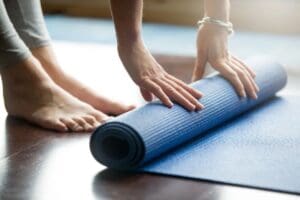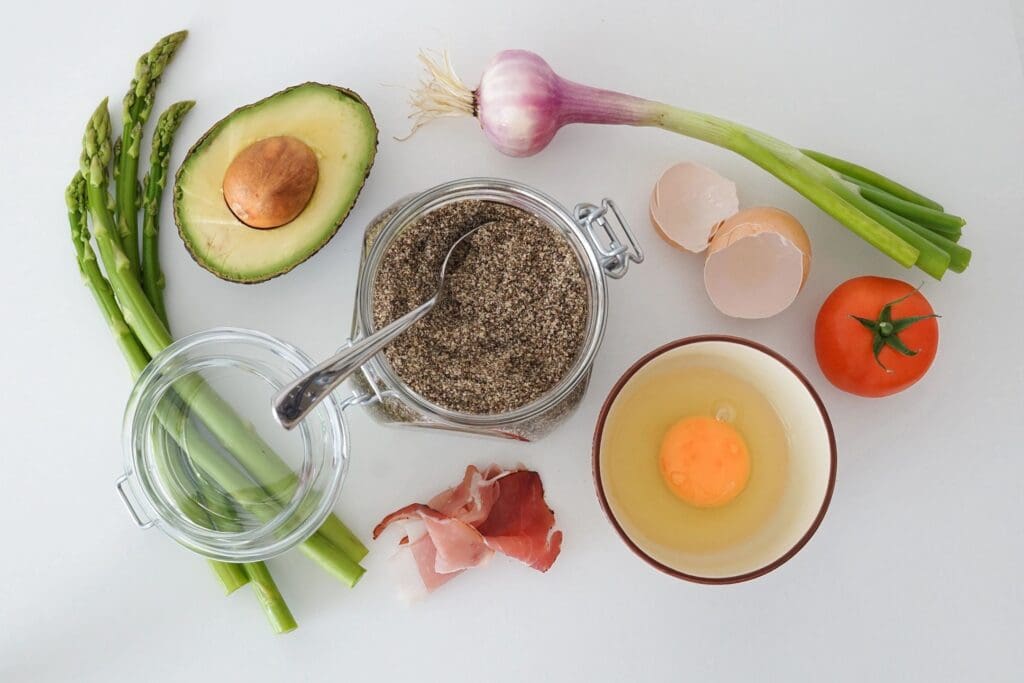
As the years pass, our bodies start to experience physical changes that can reduce our mobility, flexibility, and everyday movement. Aging can be a frightening prospect, leading even the most active individuals to give up on the idea of finding an exercise routine to keep them fit. But it doesn’t have to be that way! With the right advice and knowledge, anyone can maintain their mobility and vitality even after they reach the age of fifty.
In this blog post, we’re going to look at 10 tips for staying flexible and healthy as you age by exploring some easy exercises that will help you stay as supple as ever and help with your personal growth.
There’s no age limit when it comes to staying fit, and it’s never too late to start. Even if you’ve never done any fitness activity before, the exercises we’ve featured here are perfect for those looking to improve their strength, flexibility, and balance.
From Pilates to swimming, and from strength training to stretching, there are plenty of activities that you can incorporate into your daily routine to stay in top shape. And while the physical benefits are obvious, there are also mental benefits. After all, staying active is an important part of your overall well-being and mental health.
So if you’re ready to stay fit and healthy as you age, keep reading to find out what these 10 tips are!
Benefits of Increased Flexibility in Older Adults
Staying active and maintaining flexibility is an important part of health and well-being as you age. Increased flexibility can benefit older adults in many ways, from easing joint pain to improving balance and range of motion. Here are some key benefits of increased flexibility for older adults:
– First: increased flexibility can reduce pain in muscles and joints. Stretching can help to loosen tight muscles, reduce stiffness and tension, and improve mobility. This can be especially helpful for those with chronic conditions such as arthritis.
– Second: increased flexibility can improve balance and coordination, reducing the risk of falls. When the muscles and joints are more flexible, they are better able to support the body. A regular stretching routine can help improve coordination, balance, and stability.
– Third: increased flexibility helps enhance posture and circulation. Stretching can help to improve posture by loosening tight muscles and improving alignment. Good posture helps to reduce strain on the spine and other joints, and can also improve circulation.
– Finally: increased flexibility can help reduce stress and fatigue. Stretching relieves tension and releases endorphins, which can reduce stress and boost energy levels.
Incorporating regular stretching into your daily routine is an important part of promoting physical health and well-being as you age. Taking the time to stretch your muscles and joints can help you to stay active, reduce pain, and improve balance, posture, and circulation. With these 10 tips for staying flexible and healthy as you age, you can help your body to stay strong and active.
Simple Exercises to Increase Flexibility
Regular stretching and exercise are key to staying flexible and maintaining mobility as you age. It’s important to make sure you’re taking the time to stretch and exercise regularly. Here are 10 tips for staying flexible and healthy as you age:
1. Start Slow: As you get older, it’s important to take it slow when it comes to exercise. Start with low-impact activities like walking or swimming and gradually increase the intensity over time.
2. Incorporate Stretching: Stretching helps keep your muscles flexible and can help reduce the risk of injuries. Make sure to stretch before and after any kind of physical activity.
3. Incorporate Resistance Training: Resistance training is an effective way to build muscle strength and increase flexibility. Try incorporating weights or other forms of resistance training into your routine.
4. Eat Healthy: Eating healthy is essential for staying healthy and flexible as you age. Try to focus on eating whole, unprocessed foods and avoiding processed and sugary foods.
5. Drink Plenty of Water: Staying hydrated is essential for good health and flexibility. Make sure to drink plenty of water throughout the day.
6. Take Breaks: It’s important to take breaks between workouts to give your body time to rest and recover.
7. Incorporate Yoga: Yoga is an excellent way to improve flexibility, strength, and balance. Try incorporating yoga into your routine.
8. Try Pilates: Pilates is great for improving posture and increasing flexibility. Try adding Pilates to your workouts.
9. Try Tai Chi: Tai Chi is an excellent way to improve balance, strength, and flexibility. It can also help reduce stress and anxiety.
10. Get Regular Check-Ups: It’s important to get regular check-ups with your doctor to monitor your health and flexibility. Make sure to get regular check-ups and talk to your doctor about any new exercises or activities you’re considering.
Following these 10 tips can help you stay flexible, healthy, and mobile as you age. Make sure to incorporate stretching, resistance training, yoga, and Pilates into your routine, and be sure to get regular check-ups with your doctor. With the right approach and dedication, you can stay flexible, healthy, and active for many years to
Stretching Techniques for Improved Mobility
Stretching is a key way to maintain the flexibility, mobility, and vitality of your body as you age. Regular stretching can help improve posture, reduce pain, prevent injuries, and increase the range of motion of your joints. Here are some other tips to help you stay flexible and healthy as you age:
1. Start with a warm-up: Warm up your body before stretching by doing some light aerobic exercise like jogging or biking for 5-10 minutes. This loosens your muscles, making them more pliable and ready for stretching.
2. Focus on stretching all your body parts: Stretch all your body parts – your arms, legs, back, neck, and even your core. Hold each stretch for at least twenty seconds and repeat each stretch 4 to 6 times.
3. Take frequent breaks: Give your body the rest it needs between stretching sessions. Take a break every 15 minutes and don’t overdo it.
4. Don’t bounce your stretches: This can cause tears or pulls in your muscle fibers. When stretching, use slow, steady movements and never force your body beyond its limits.
5. Drink plenty of water: Stretching puts pressure on your muscles and can cause dehydration, so it’s important to stay hydrated.
By following these tips, you can maintain your mobility and vitality over 50. With regular stretching, you can achieve improved flexibility and range of motion, better posture, and less pain.
Building Strength for Improved Posture
Maintaining strength and posture is key to staying healthy and active as you age. Strength training helps to build muscle mass, which can improve posture, balance, and coordination. Regular strength training can also help to reduce the risk of injury. Here are 10 tips for building strength for improved posture and health.
1. Start with bodyweight exercises. Squats, planks, and lunges are all great bodyweight exercises that can help you build strength and improve posture. Start with a few sets of each exercise and gradually increase the intensity as your strength increases.
2. Use resistance bands. Resistance bands are a great way to add resistance to your workouts. You can use them to add resistance to bodyweight exercises, or you can use them to perform exercises like bicep curls or shoulder presses.
3. Incorporate a variety of exercises. To build strength and improve posture, it’s important to incorporate a variety of exercises into your routine. This includes compound exercises like squats, push-ups, and pull-ups, as well as isolation exercises like arm and leg curls.
4. Try yoga and Pilates. Yoga and Pilates are both excellent ways to build strength and improve posture. Both of these forms of exercise involve slow, controlled movements that help to build strength and improve flexibility.
5. Focus on form. Good form is essential for building strength and improving posture. Make sure you’re using proper form for all the exercises you do, and take the time to focus on the muscles you’re working.
6. Work out regularly. Regular strength training is key to building strength and improving posture. Aim to strength train at least three times a week, with a day or two of rest in between each session.
7. Mix up your routine. To keep your workouts interesting and effective, it’s a good idea to mix things up. Try new exercises, vary the intensity and number of sets and reps, and use different kinds of equipment.
8. Stretch after your workouts. Stretching after your workouts helps to reduce soreness and improve flexibility. Make sure to stretch all the major muscle groups, including the hamstrings, calves, glutes, chest, back, and shoulders.
9. Get plenty of rest. Rest is important for building strength and improving posture. Aim for at least 8 hours of
Balancing Exercises for Steadier Steps
Balancing exercises is important for maintaining healthy mobility and vitality as you age. They improve your balance, posture, and coordination, and help strengthen your legs, hips, and ankles. As a result, balancing exercises help you avoid falls, which can be a danger for those over 50.
To stay steady on your feet, try standing on one leg for 30 seconds at a time. This simple exercise can be done anywhere and is a great way to improve balance. You can also add a resistance band for extra intensity.
One variation is to stand on a pillow or cushion, which will help you maintain balance on an uneven surface. Additionally, it’s beneficial to add movements such as squats and lunges to your routine, as these will help build strength and stability as you age.
Staying Hydrated and Eating Right for Optimum Health
Staying hydrated and fuelling your body with the right nutrients is key to achieving optimum health. Eating a balanced diet with plenty of vitamins and minerals helps to maintain energy levels and stay healthy. Drinking enough water and avoiding processed foods, sugary drinks, and unhealthy fats are essential for keeping your body in the best condition.
Engaging in regular physical activity is also very important in maintaining a healthy lifestyle. Eating right and staying hydrated helps to optimize performance and increase energy, allowing you to get more out of your workouts. Sticking to a balanced diet helps to improve mobility, reduce injury risk, and promote overall well-being.
Setting Goals and Tracking Progress
Setting goals and tracking progress is one of the best ways to remain motivated and dedicated to your fitness journey as you age. Whether it’s to increase flexibility, and strength, or simply to maintain or improve the body’s current condition, tracking progress helps you stay on top of your fitness routine and make sure you’re consistently working towards your goals.
To stay flexible and healthy as you age, it’s important to set realistic and achievable goals, then measure your progress as you go. Making a plan and tracking progress is key, but don’t forget to be flexible and take into account any changes you may experience over time. Set short-term and long-term goals, break them down into smaller, achievable chunks, and try to find ways to make your routine fun.
Rest and recovery are essential for staying healthy and flexible, so make sure to include rest days in your plan. Keeping a journal is also a great way to stay focused and motivated, as well as to review how far you’ve come and how much you’ve achieved. With the right guidance, dedication, and consistent effort, anyone can stay healthy and flexible as they age.
Strategies for Overcoming Exercise Barriers
Exercising regularly can become more difficult as we age, but it’s important to stay active and maintain flexibility and mobility. There are many effective strategies to help overcome exercise barriers. Incorporating a few simple tips into your routine can help keep you motivated and make it easier to keep moving.
For example, start slow and gradually increase your intensity and duration of exercise. Keeping exercise sessions short and sweet, like going for a 10-minute walk or exercising for 5 minutes, can help you find and stick to a routine. You can also set realistic goals, like achieving a certain level of fitness or strength or doing a certain amount of exercise each day.
Finally, choose activities you enjoy, and don’t be afraid to try something new. With our tips for staying flexible and healthy as you age, you’ll be sure to overcome any exercise barriers.
Conclusion
To make the most of these strategies, it is important to maintain a balance between exercising and rest. Aim to incorporate different types of exercise into your routine, such as strength training, cardio, yoga, and Pilates. These exercises can help to improve your balance and posture, while also increasing your strength and endurance as well as upgrading your personal development.
Additionally, make sure to take breaks in between exercises and make sure to get enough sleep and rest. Proper nutrition is also key to staying healthy and fit. Eating a diet rich in fruits, vegetables, and lean proteins can provide essential nutrients and boost your overall energy levels. With the right combination of balanced nutrition and exercise, you’ll be able to stay fit, healthy, and flexible as you age.




